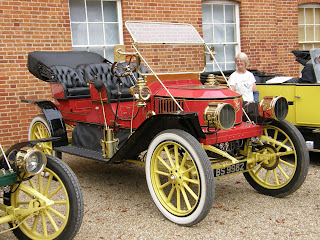
This is going to be a very quick post as I'll be leaving for the airport in a couple of hours. I'm all packed and ready to go, I'll be flying to London today and staying overnight then tomorrow afternoon I'll be flying to Boston. I had a lovely day yesterday as all of us went out for lunch to belatedly celebrate my birthday, both babies were very good and it was great to have everyone there together. This is just to finish up my Norfolk trip so that I can get straight into boring everyone with my US photos when I get back :) On the third day I decided to spend the morning at Gressenhall Workhouse and Farm ,they have a small working farm with rare breed animals which was originally the farm which supplied the local Workhouse with food. There's a rural life museum, a Victorian cottage and garden and all sorts of other things there and would easily provide a great full day out. I only had a couple of hours so decided to go round the farm. The photo at the top is the farmhouse.

You can go inside the downstairs part which is lovely, I'd be happy to move straight in there. This is the kitchen with a lovely old range on the left. Not quite so lovely when you had to blacklead it regularly I suppose:)

This one side of the scullery with the old mangle. I remember my gran using one of those and it was extremely hard work especially since she was only 4'11" tall. I was tempted to run off with a couple of those wonderful pieces of pottery!

The other side of the scullery with it's lovely deep sink and wooden draining board.

A pair of Suffolk Punch horses, the big working horses used for ploughing, carting etc. They are very rare now and I believe there are only about 360 left. They are lovely gentle horses even though they are so big.

The horseman was kind enough to unfasten one of them and bring him to the stable door to have his photo taken. I've somehown managed to make him look rather thin which he wasn't.

Red Poll cattle

Large Black pigs

I chanced to turn up at the same time as a group of vintage cars which were doing a travelling tour of Norfolk. This lovely green one arrived more or less at the same time as me.

The really special thing about these cars is that they were all steam driven!! I didn't realise that there were such things as steam driven cars.

Aren't they just great?

I also went to Dereham while I waited for the Farm to open, this is St Nicholas Church which was founded in AD654 by St Withburga though the church you actually see was built around 1200. Our friend Bishop Bonner was parish priest here at one time and his cottage (previou post) is just down the road from the church.

The font was made in 1488.

The interior showing the nave and chancel.

The detached Bell Tower was built between 1501 and 1536.

St Withburga's Well where the founder of the church was originally buried. It was a pilgrim shrine in Saxon times. I wouldn't mind betting that the spring feeding the well was originally a pagan site.

Naughty Abbott and monks! You will need to click on the photo to be able to read it properly.
That's it, I have an hour to get ready and have some breakfast then I'm off. Back in early October.





















